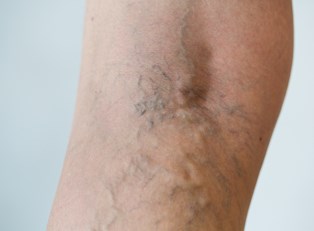Spider veins, while often confused with varicose veins, are subtly different. Varicose veins can be painful and lead to some serious side effects, but spider veins generally do not hurt and are often little more than a web-like patch of purple, blue, or red. They appear when the valves in the veins fail to work and a backup of blood occurs, which can be caused by a number of factors. Although some of them are beyond control, several can be attended to before the veins show up.
Genetics
People born with weak veins are more susceptible to spider veins than most others. For those with family members who already have them, the chances of developing spider veins is even greater. In fact, according to experts, 50% of people who have family members with vein problems develop those same problems as well. Additionally, women are more likely to experience issues with spider veins than men.
Hormonal Changes
Hormones have a considerable effect on the likelihood of developing spider veins. Both pregnancy and menopause can lead to spider veins, as both of these conditions alter the hormones in a woman's body. Similarly, hormonal birth control can cause them because it increases levels of both estrogen and progestogen. Going through the changes of puberty can also cause spider veins.
Age Factors
The risk of getting spider veins increases with age because veins tend to get weaker with time. Furthermore, additional years allow for all of the other causes of spider veins to accumulate. However, this is not to say that the very young don’t get them, only that they are more common in older adults.
Obesity
Obesity also increases the chance of developing spider veins. Because of the additional weight, excess pressure is placed on the veins, thus weakened valves become more likely. Furthermore, those who are overweight are often less likely to be active, and inactivity is another cause of spider vein development. Long periods of being sedentary results in less successful blood flow, thus the heart and veins have to work harder, putting more pressure on valves and wearing veins out more quickly. Even if someone is standing up, if he or she isn't moving around, the issue is still present.
Abdominal Conditions
People with chronic abdominal issues are also more likely to have spider veins. According to experts, conditions like abdominal tumors and long term constipation put considerable stress on the abdomen. This in turn puts additional pressure on the veins in the area. Since spider veins occur most commonly in the legs and the strain on the veins begins just above them, the veins in the legs don’t get the benefit of well-moving blood.



